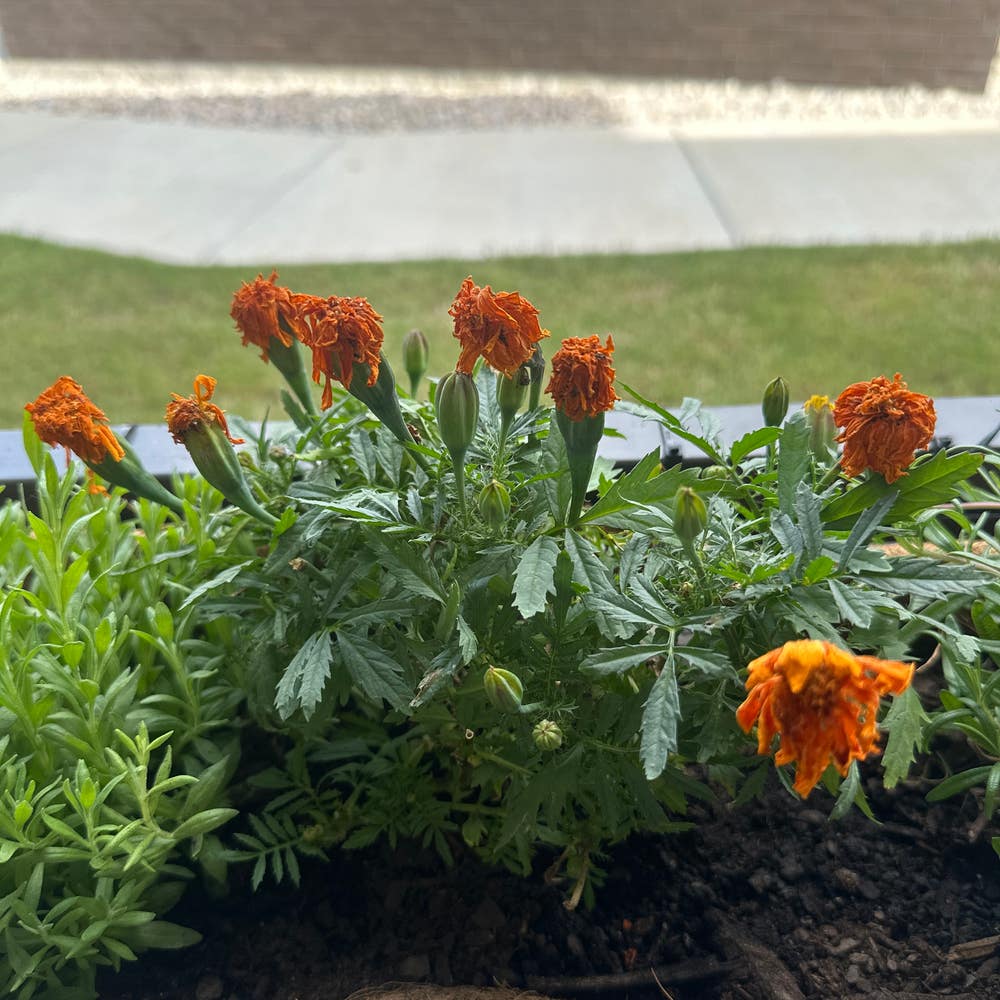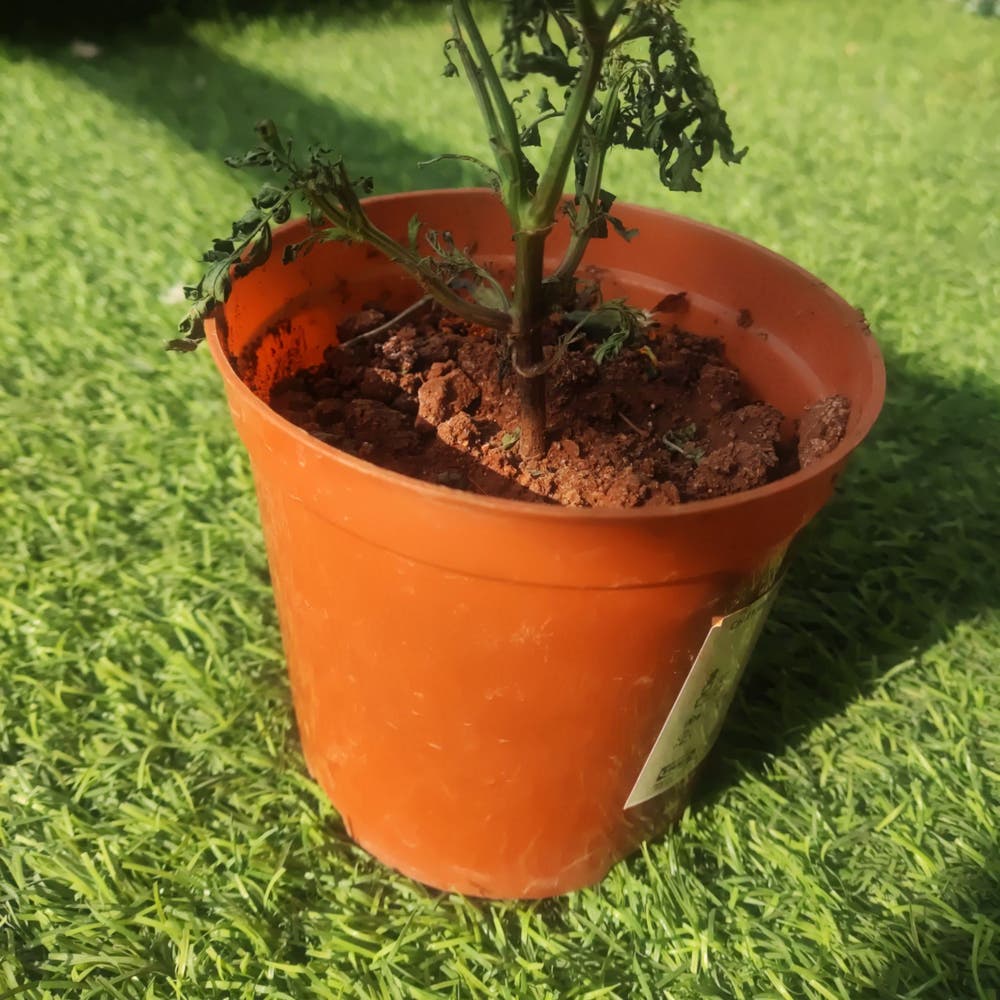By Kiersten Rankel
Jan 13, 2024•4 min read
Discover the secret to vibrant marigolds 🌼—keep them cozy within the 70°F to 85°F sweet spot!
- 🌡️ Ideal Marigold Temp: 70°F to 85°F for health and blooms.
- Watch for wilting or brittle leaves to spot temperature stress.
- Use mulch, cloches, and shade cloth to mitigate extreme temperatures.
Nailing the Perfect Marigold Temperature
🌞 The Goldilocks Zone: 70°F to 85°F
Marigolds are sun worshippers, but they prefer their rays with a side of moderate warmth. The ideal temperature range for these golden beauties is 70°F to 85°F. It's the sweet spot that encourages robust growth and vibrant blooms.
When temperatures dip below 70°F, marigolds start to sulk, growth slows, and flowering can become as rare as a snowball in July. On the flip side, when the mercury climbs above 85°F, it's meltdown city. Leaves may wilt, and the plants can become stressed, making them an all-you-can-eat buffet for pests and diseases.
❄️ When the Mercury Drops: Marigolds in the Cold
Marigolds can handle a bit of a chill, but they draw the line at frost. They can survive down to about 40°F, but it's not a party they enjoy.
To prepare for cooler nights, especially in the unpredictable shoulder seasons of spring and fall, think like a marigold. They'd probably grab a sweater if they could. Instead, you can offer mulch for root insulation or use cloches to trap a bit of the day's warmth. This way, your marigolds won't be left shivering and stunting their growth when the temperature drops.
Spotting Trouble: Signs Your Marigold is Too Hot or Too Cold
🌡️ Heat Stress Symptoms
Wilting, but not from thirst? Marigolds can take the heat, but they have their limits. Look for wilting despite proper watering, or growth that's hit the brakes. If blooms are drying up or falling off like autumn leaves, your marigold's waving a white flag at the sun.
❄️ Cold Stress Symptoms
When the mercury plummets, marigolds feel the chill. Brittle leaves that curl inward are your first clue. If your marigold's growth has slowed to a crawl and it looks like it's trying to bundle up, it's time to take action. Leaves huddling in the center? That's marigold for "I'm freezing!"
Keeping Your Cool (or Warmth): Preventing Temperature Stress
🌞 The Scorching Sun and Your Marigold
Marigolds are sun-lovers, but everyone has their limits. In the face of a heatwave, your marigolds might start to feel the burn. Shade cloth can be a game-changer during peak hours, acting like a parasol for your petalled pals. It's essential to keep the soil moist without going overboard; think of it as a refreshing sip, not a flood.
❄️ The Chilly Challenge
When the temperature plummets, marigolds can turn into botanical ice sculptures. To prevent this, bubble wrap can be your garden's best friend, wrapping around pots to keep roots cozy. If Jack Frost is knocking, consider moving containers indoors or to a sheltered spot. Remember, a little warmth goes a long way, so if you're using a heat lamp, keep it gentle.
Marigolds are hardy, but they're not invincible. Whether it's the sun's fiery gaze or the cold's icy grip, your vigilance will keep them thriving.
A Quick Word on Humidity
In the dance of marigold care, humidity plays a supporting role to temperature. This invisible ally can be a game-changer for your blooms, especially when the mercury starts to act up.
💦 Humidity: The Unsung Hero
Marigolds aren't divas when it comes to humidity, but they do appreciate consistency. Too dry and you might find the leaves turning as crisp as autumn leaves; too moist, and you're setting the stage for a fungal free-for-all.
Keeping It Balanced
It's all about balance. Your marigold doesn't need a rainforest vibe, nor does it want to live in the Sahara. Aim for that middle ground—think comfortable living room, not a steamy bathroom or arid attic.
Tools of the Trade
Don't play guessing games with humidity. A hygrometer can be your best friend, letting you know when to bring out the humidifier or when to crack a window to let some dry air in.
The Ripple Effect of Humidity
Remember, humidity isn't just about comfort; it affects how your marigold perceives temperature. High humidity can make a hot day feel hotter for your plant, while low humidity can make it feel cooler. It's like wearing a wet shirt in a breeze—suddenly that mild day feels downright chilly.
Quick Fixes
If you're caught off-guard by a humidity crisis, don't sweat it—ventilation can be a quick fix. Open a window or get a fan going to keep the air from becoming stagnant. It's the plant equivalent of stepping into an air-conditioned room after a jog in the park.
Ensure your marigolds thrive in their sweet spot 🌡 with Greg, which tailors care plans to keep your blooms at their ideal temperature.
#Tagetes
17 posts on Greg-
soooo i work at a certain hardware store and today while i was out in the garden center, i found this detached marigold head by the register! i already have some french marigolds, so i thought i’d give them a sister! i know nothing about growing flowers from seeds, so i’m just popping this in one of my spare pots and seeing what happens lol. feel free to give advice if it so pleases you!
-
Marigolds are dying #Tagetes I know that marigolds need direct sunlight and I put them in a bed that gets the most sunlight it can on my patio. They shriveles up over night. Can anyone tell me why?
-
Dried up?! I water these plants everyday but the flowers are drying up. Is it because of root rot? #Tagetes
-
#HappyPlants #PlantAddict #NewGrowth
-
My Marigold has curled up entirely and it's flowers have shed too after drying. I kept it in full sun for a week or so and yesterday had to put it in shade as it seems like it has taken too much sun. The leaves are still all curled up. How to revive it?
Browse #Tagetes
Learn More About
African Marigold Care
- 🌟 Benefits
- 🍂 Black Spots on Leaves
- 🤔 Problems
- 💩 Fertilizing
- 💨 Humidity
- ✂️ Pruning
- 👶 Toxicity to Humans
- 🪴 Repotting
- 🍃 Leaves Falling Over
- 🍂 Leaves Mushy
- 🍂 Brown Spots on Leaves
- 🍃 Leaves Dropping
- 🌞 Direct Sunlight
- 🪴 Soil
- 🌤️ Light Requirements
- 🌡️ Temperature
- 🐞 Bugs
- 🤒 Root Rot
- 💦 How Often to Water
- 🍃 Leaves Drooping

